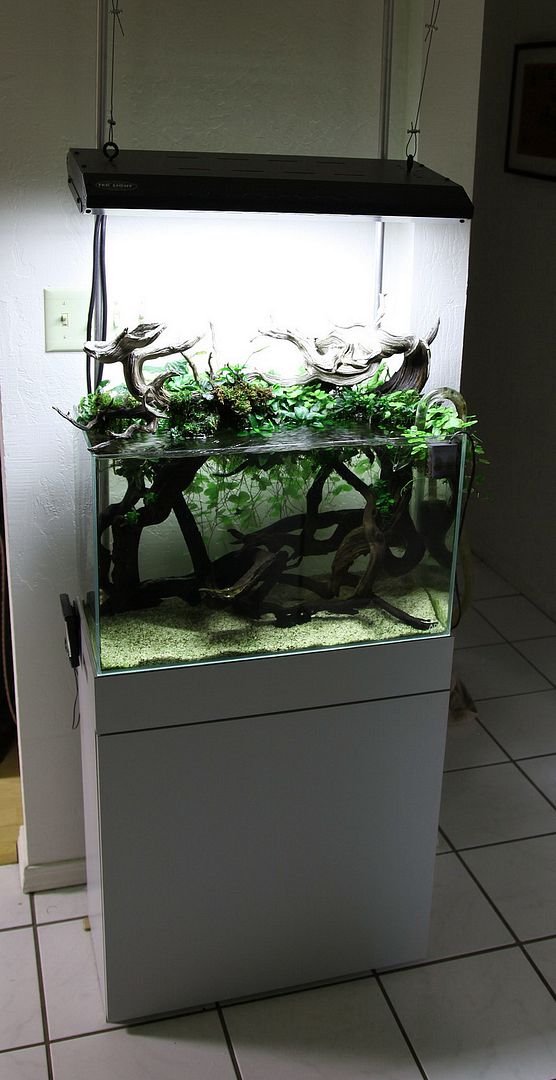Having a planted tank is not as hard it may seem, but it may take a while to get all the information needed to master the art of growing plants.
We all have to start somewhere, so the article "A beginer perspective" is the perfect start.
Whatever problems you may be facing, you were not the first one, and there are always a solution.
AquaScaping World Magazine - A Beginner's Perspective
Now, one of the failures of many planted tanks are the lack of fertilisers, CO2 and too much light.
Plants are living things, they need food, nourishment and care. By dosing the water collumn with nutrients you are giving your plants, and fish, all they need to thrive and display their beauty.
It is scary when you start, it may seem a lot to understand, but read the the EI method article below, and you will be on a very good standing to master it.
AquaScaping World Magazine - Estimative Index Fertilization Method
Now, CO2, a silent killer if misused, but it is very hard to keep a planted tank without it. You need to understand how to use it correctly, no mistakes on this one. You dose too much and you will kill all your fish and shrimp. The plants will not die from a overdosing, but the fish and shrimp will.
One of the best articles about CO2, and how to set it up, is the one below:
AquaScaping World Magazine - Pressurized C02 Injection Systems
You do not need to have CO2 to keep a planted tank, you can keep ferns, crypts, mosses and some other plants on a non co2 tank, but you would need to be more disciplined to do so.
The article by Aziz Dhanani will show you how to setup a low tech aquarium.
http://www.aquascapingworld.com/magazine/May-2008/Magazine/El-Natural-Vs-Tom-Barr-s-Low-Tech.html
How to prevent algae? That is one of the main questions we hear on the forum. Algae is opportunistic, and will thrive where plants would not. Too much light is an issue, but so is unstable CO2 and bad flow (dead spots on the tank).
The tested and tried methods to keep algae at bay are all discused on the article below:
AquaScaping World Magazine - Methods to Prevent Algae
AquaScaping World Magazine - Dissolved Organic Compounds Explained
We all have to start somewhere, so the article "A beginer perspective" is the perfect start.
Whatever problems you may be facing, you were not the first one, and there are always a solution.
AquaScaping World Magazine - A Beginner's Perspective
Now, one of the failures of many planted tanks are the lack of fertilisers, CO2 and too much light.
Plants are living things, they need food, nourishment and care. By dosing the water collumn with nutrients you are giving your plants, and fish, all they need to thrive and display their beauty.
It is scary when you start, it may seem a lot to understand, but read the the EI method article below, and you will be on a very good standing to master it.
AquaScaping World Magazine - Estimative Index Fertilization Method
Now, CO2, a silent killer if misused, but it is very hard to keep a planted tank without it. You need to understand how to use it correctly, no mistakes on this one. You dose too much and you will kill all your fish and shrimp. The plants will not die from a overdosing, but the fish and shrimp will.
One of the best articles about CO2, and how to set it up, is the one below:
AquaScaping World Magazine - Pressurized C02 Injection Systems
You do not need to have CO2 to keep a planted tank, you can keep ferns, crypts, mosses and some other plants on a non co2 tank, but you would need to be more disciplined to do so.
The article by Aziz Dhanani will show you how to setup a low tech aquarium.
http://www.aquascapingworld.com/magazine/May-2008/Magazine/El-Natural-Vs-Tom-Barr-s-Low-Tech.html
How to prevent algae? That is one of the main questions we hear on the forum. Algae is opportunistic, and will thrive where plants would not. Too much light is an issue, but so is unstable CO2 and bad flow (dead spots on the tank).
The tested and tried methods to keep algae at bay are all discused on the article below:
AquaScaping World Magazine - Methods to Prevent Algae
AquaScaping World Magazine - Dissolved Organic Compounds Explained





